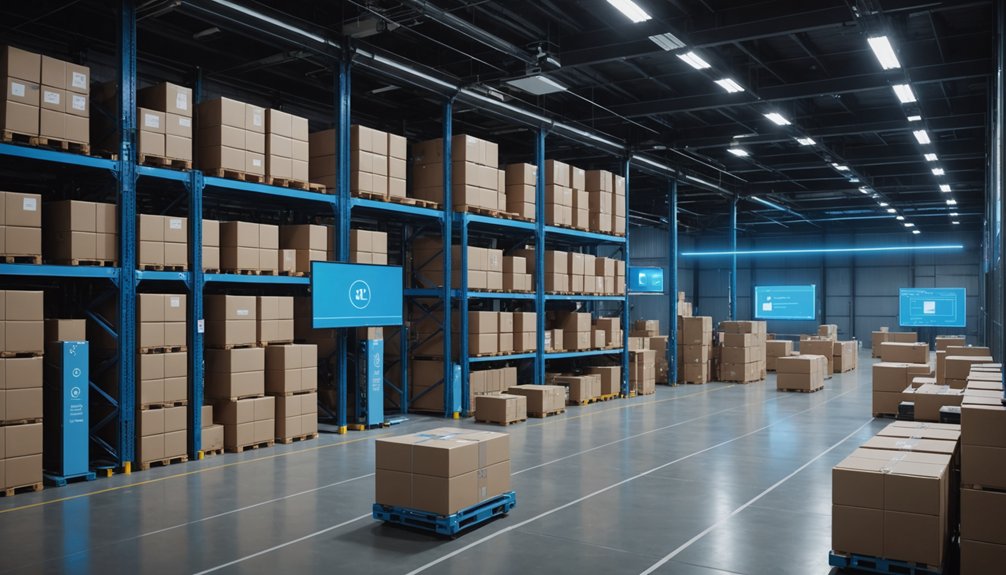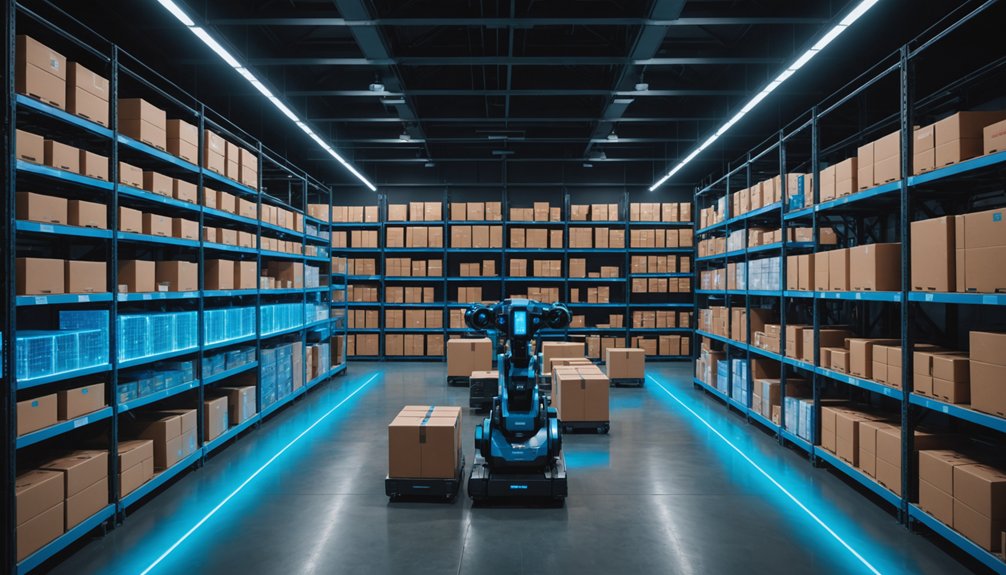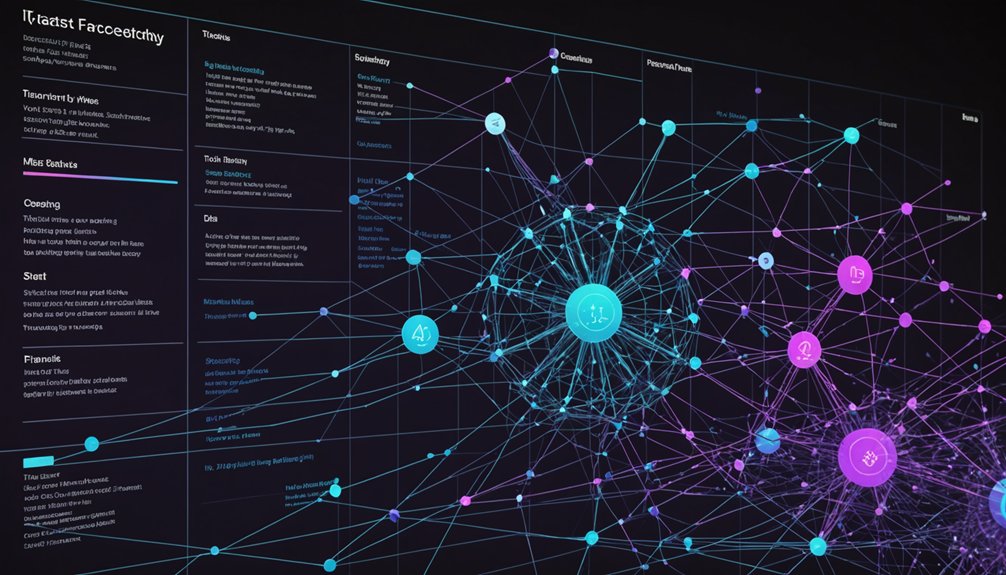By 2025, AI tools will transform supply chains beyond recognition. Predictive analytics will forecast demand with uncanny accuracy, while IoT sensors track everything in real time. Seriously, if you’re still managing warehouses the old way, you’re toast. Smart robots handle the grunt work now. Fleet management? All data-driven. The pandemic exposed weaknesses, and AI is fixing them fast. The supply chain of tomorrow won’t just be efficient—it’ll be nearly indestructible.

Innovation never sleeps in today’s cutthroat supply chain world. Companies either adapt or die. AI has transformed from buzzword to necessity, with predictive analytics leading the charge. These smart systems crunch massive data sets to forecast demand patterns with scary accuracy. No crystal ball needed—just algorithms.
The marriage of AI and IoT has created a supply chain power couple. Real-time tracking through IoT sensors means businesses know exactly where their stuff is. Always. Temperature-sensitive shipments stay perfectly chilled. Visibility across the entire chain is no longer a luxury—it’s the baseline. Companies without this capability? They’re dinosaurs waiting for the meteor. Predictive maintenance systems reduce unplanned downtime and enhance operational continuity.
Demand forecasting has gotten freakishly good. AI examines historical sales data, sure, but it also factors in weather patterns, economic indicators, and market trends. The result? Inventory levels that match actual demand. Less waste. More profit. Simple math, really. Real-time inventory tracking across multiple locations provides businesses with a centralized view for smarter distribution decisions.
Warehouse management isn’t immune to the AI revolution. Stocking strategies now rely on turnover rates and sales patterns rather than gut feelings. The days of “we’ve always done it this way” are dead and buried. Good riddance. These systems cut holding costs dramatically while boosting operational efficiency. Autonomous mobile robots now zip through warehouses handling the most physically demanding tasks with precision beyond human capabilities.
Fleet management has been completely reimagined. Vehicles get maintained before they break down. Fuel usage is optimized down to the last drop. Routes adjust in real-time based on traffic conditions to minimize fuel consumption. It’s not magic—it’s data.
Perhaps most fundamentally, AI has become the backbone of supply chain resilience. The pandemic exposed weaknesses; AI is building the fortress. Risk management algorithms identify potential disruptions before they happen. Supplier diversification strategies get crafted with precision.
The supply chain of 2025 isn’t just efficient—it’s nearly indestructible. The revolution isn’t coming. It’s already here. And it doesn’t care if you’re ready.
Frequently Asked Questions
What Skills Will Supply Chain Professionals Need in the AI Era?
Supply chain pros need a whole new toolkit for the AI revolution.
Data analysis skills? Non-negotiable. Understanding the basics of AI and machine learning? Obviously.
They’ll need to master digital literacy while staying flexible enough to pivot when tech changes.
Risk management’s huge now. Collaboration across departments isn’t optional anymore.
The kicker? Continuous learning—because yesterday’s skills are tomorrow’s dinosaurs.
Adapt or get left behind.
How Much Does Implementing AI Supply Chain Solutions Typically Cost?
Implementing AI in supply chains isn’t cheap. Initial investments run high—substantial hardware and software costs plus specialized expertise that doesn’t come easy. Companies typically shell out anywhere from $100,000 to several million, depending on scale.
Maintenance? That’s another ongoing expense. The good news? Operational savings of 15-30% eventually offset these costs.
SMEs struggle the most, obviously. Big players absorb the hit more easily. That’s business.
Can Small Businesses Afford AI Supply Chain Optimization Tools?
Yes, small businesses can absolutely afford AI supply chain tools now.
SaaS models offer subscription pricing that’s way more manageable than traditional enterprise software. Cloud-based solutions eliminate hefty hardware costs.
Many vendors provide tiered pricing—start small, scale up when ready. The market’s flooded with options specifically for modest budgets.
ROI comes quick too, with efficiency gains often offsetting costs within months. No massive upfront investment required.
Will AI Completely Replace Human Workers in Supply Chains?
AI won’t completely replace humans in supply chains. Period. The tech optimizes inventory and automates routine tasks, sure, but humans remain essential for strategic decisions.
Workers aren’t disappearing—they’re evolving. Their roles shift toward maintaining AI systems and handling complex problems machines can’t solve. Companies focus on upskilling employees rather than replacing them.
Human judgment isn’t optional in supply chain management. It’s mandatory.
How Long Does AI Supply Chain Implementation Typically Take?
AI supply chain implementation typically takes 6-18 months.
Simple projects might be faster, complex ones longer. Organizations often underestimate the process.
Data integration is the real killer—takes way more time than expected. Companies need patience.
Phased approaches work best. Full enterprise-wide implementation? Years, not months.
The timeline depends on existing infrastructure, data quality, and organizational readiness.
No quick fixes here.




